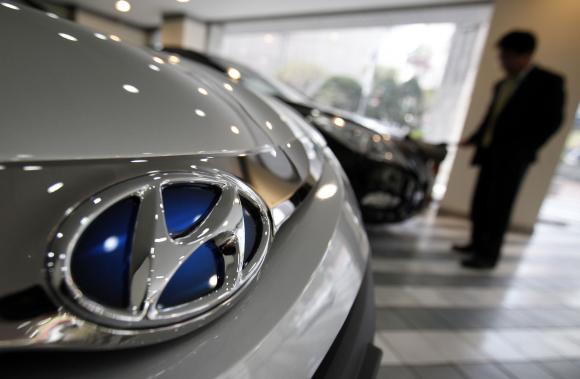Hyundai woes linger as strong won, home slump hit earnings
(Agencies) Updated: 2014-01-24 15:52
 |
|
An employee wipes down a car as the logo of Hyundai Motor is seen on a car at a Hyundai dealership in Seoul April 25, 2013. [Photo/Agencies] |
SEOUL - South Korea's Hyundai Motor posted its first year-on-year fall in quarterly revenue in nearly three years, hit by a stronger local currency and slumping sales at home, compounding the challenges facing the once star performer.
Hyundai, the world's fifth-biggest automaker along with Kia Motors, has endured a tough year, marked by lackluster performances in the United States and Europe, a string of recalls and a management reshuffle.
The company's China sales jumped last year, but growth slowed in the fourth quarter in the key market as Japanese rivals made a comeback. It hopes increased capacity will push growth back up in China this year.
Hyundai concedes global sales growth will slow to 4 percent this year from 7 percent last year, even as it plans to launch a revamped version of its popular Sonata sedan. Overall, it aims to sell 4.9 million vehicles in 2014.
On Thursday, the carmaker posted a revenue of 21.94 trillion Korean won ($20.56 billion) in the October to December period, a 3 percent fall from a year earlier. This marked its first year-on-year fall since at least 2011 when new accounting methods were adopted.
"Currency fluctuations - the won's strength coupled with the yen's weakness - weighed on our earnings," Hyundai said in a statement.
The South Korean won gained 3 percent against the dollar and surged 27 percent versus the Japanese yen in the fourth quarter from a year earlier, reducing the value of Hyundai Motor's overseas revenue in local currency terms and lifting Japanese rivals' price competitiveness in the United States and other key export markets.
Hyundai seeks to revive growth with new models, but the won's strength, coupled with the yen's weakness, may toughen competition and curb price rises.
Hyundai has not announced new plant plans in recent years, opting for squeezing out more vehicles from existing plants. This allowed the automaker to run factories at full capacity globally and achieve an industry-leading margin of 9.5 percent last year, but sales growth slowed down.
Net profit jumped 15 percent to 2.06 trillion won, but missed a consensus forecast of 2.23 trillion. Its profit a year ago was hurt by provisions to cover the cost of compensating customers for overstated fuel-economy claims on some cars sold in the United States and Canada.
- NHTSA says finds no 'defect trend' in Tesla Model S sedans
- WTO rare earth ruling is unfair
- Amway says 2014 China sales may grow 8%
- President Xi in Europe: Forging deals, boosting business
- CNOOC releases 2013 sustainability report
- Local production by Chery Jaguar Land Rover this year
- Car lovers test their need for speed in BMW Mission 3
- China stocks close mixed Monday

















